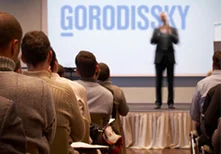Shocked readers: IP in Russia in the news media
18 December 2024In Russia, we sometimes see information in the foreign media that intellectual property (IP) in Russia has died, and no protection or enforcement of IP rights is possible. Aside from newspaper articles occasionally appearing in the media, we may see that allegation is repeated in the 14th package of restrictive measures issued by the Council Regulation (EU) or in the 2024 Special 301 Report issued by the Office of the United States Representative.
One may wonder where that information comes from. Unexpectedly, Russian journalists came to help. Kommersant, a popular newspaper, ran an article under a snazzy title: “Foreign licensees have been deprived of tools to fight counterfeiting.” The same day, C-News, an Internet media, shocked the readers with the declaration: “Foreign owners lost opportunities to fight piracy in Russia. A British company fell out of the race.” These authoritative sources may trigger another wave of strewing scurrilities against Russia.
So what really happened? Carte Blanche Greetings Ltd. (the Company) sued three individual entrepreneurs for infringement of copyright for a character from the Blue Nose Friends Characters series. The court of first instance satisfied the claims but reduced compensation for infringement. The court of appeal upheld the judgment but reduced compensation for infringement. The IP court upheld the judgment of the appeal court. The infringers appealed the judgment at the Supreme Court (SC) and asked it to cancel the decisions of lower courts.
The Collegium of Economic Disputes of SC concluded that the judgment should be canceled. Now, the interesting part of the story begins. The court did not say that there was no infringement. The question is: who will intervene as a plaintiff?
The court explained that in cases of copyright infringement, the plaintiff must prove their right to the claim. The plaintiff may be the author or the assignee. The first instance court proceeded from the fact – or rather the assumption – that ownership of copyright was proven by the plaintiff.
At this stage, the situation took an unexpected but well-grounded turn.
The Supreme Court explained the basics of authorship and ownership. According to Article 1257 of the Civil Code, the original copyright belongs to the author. Other persons – if they claim ownership of the copyright – should provide evidence of transfer of right to them.
The Company submitted an affidavit executed by the financial director of the plaintiff certified by a notary. Russian law does not have an affidavit as a legal instrument, but judicial practice in Russia understands it as a testimony taken under oath and verified by a notary or another authorized person.
The affidavit in question sets forth that the Company is the only owner of all rights in the world to pictures, illustrations, toys, souvenirs, and characters in Blue Nose Friends. The affidavit does not contain information about the history and date of creation of the copyrighted work. There is no information about the author, labor contracts, other contracts, or the legal basis of ownership. The affidavit only confirms that the disputed work exists and that the Company deems itself as the owner of the right to a character.
The lower courts should have found out and examined the circumstances relevant to the creation of work, the emergence of copyright, and the assignment of rights from the original author (owner). This was not done by the lower courts. Moreover, the respondents had asked the first instance court and the appeal court to order the submission of such evidence, but their requests were dismissed. The Supreme Court noted their omission. The court also explained that the affidavit per se cannot be sufficient evidence of ownership of copyrighted work in the absence of contracts or other pieces of evidence. The affidavit in question is silent regarding the author and details of the assignment of rights.
The Collegium of the Supreme Court concluded that in the absence of a detailed examination of the circumstances given above, it is not possible to ascertain whether there are grounds to satisfy or reject the claims and, consequently, whether the compensation should be awarded, and, in the affirmative, the amount of compensation.
The Supreme Court remanded the case to the first instance court so that it could investigate the circumstances of the acquisition of rights to the copyrighted work.
As can be seen, there are no reasons for the catchy titles of the articles mentioned. One may only hope that false allegations will not spread in the media. The Supreme Court correctly interpreted the law. It cannot be excluded that in some countries, such affidavits may have legal force, but it should be noted that acceptance of affidavits of this kind may be fraught with abuse of rights because any person may appear before the notary and affirm that they have rights to something.
It may be expected that the first instance court will call for necessary and sufficient evidence of ownership of copyright, and the plaintiff will be able to prevail in court and obtain compensation.
The question remains: why did the representatives of the plaintiff not call into question the viability of the document before starting the court procedure? The bottom line: do not believe ink slingers. Seek authentic information from experts.










